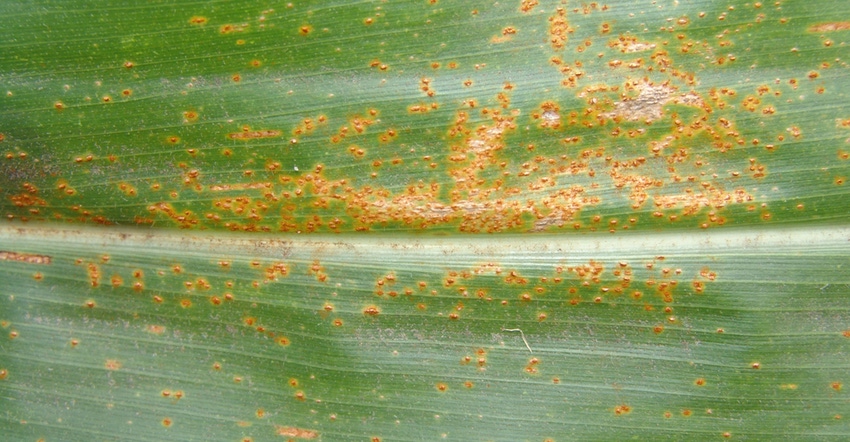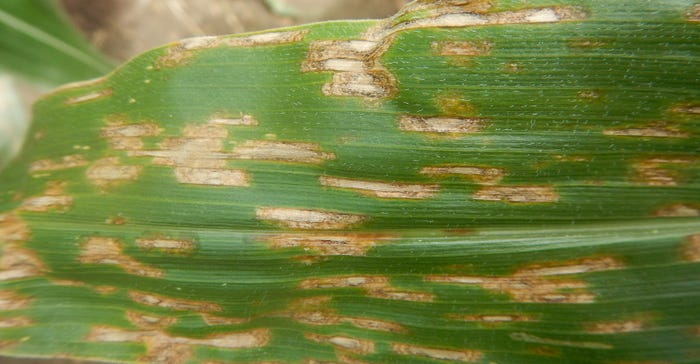February 27, 2018

This growing season, University of Missouri Extension plant pathologist Kaitlyn Bissonnette urges growers to be on the lookout for a few emerging crop diseases.
Bissonnette wants farmers to notify her if they spot any of the following four diseases in fields this year. Read on for a refresher:
Southern rust. Corn producers reported southern rust in parts of Missouri in 2017, and Bissonnette suspects it is more prevalent than reported. Southern rust appears on leaves as small, circular, reddish-orange pustules. It grows best in warm weather and under high relative humidity. It spreads rapidly and can cause yield loss if infection starts around tasseling. Its spores blow in from southern states and Mexico.
Southern rust shows in later-planted corn, so Bissonnette recommends timely planting and treatment with fungicides if infection begins early, especially under irrigated systems.

LOOK AT LEAVES: Bacterial ooze on corn leaves is a sign of Goss’s wilt.

Goss’s wilt. Bissonnette sees this bacterial disease as an emerging problem in Missouri. Infected corn plants exhibit dark freckles on the leaves that develop into elongated lesions. It often appears in fields when hail wounds plants, leaving openings for the bacteria to enter. The pathogen is associated with corn residue, and is more severe in fields continuously planted to corn under reduced tillage. Plant resistant hybrids, rotate crops, control weeds and manage residue to avoid Goss’s wilt.
Source: University of Missouri Extension
You May Also Like




